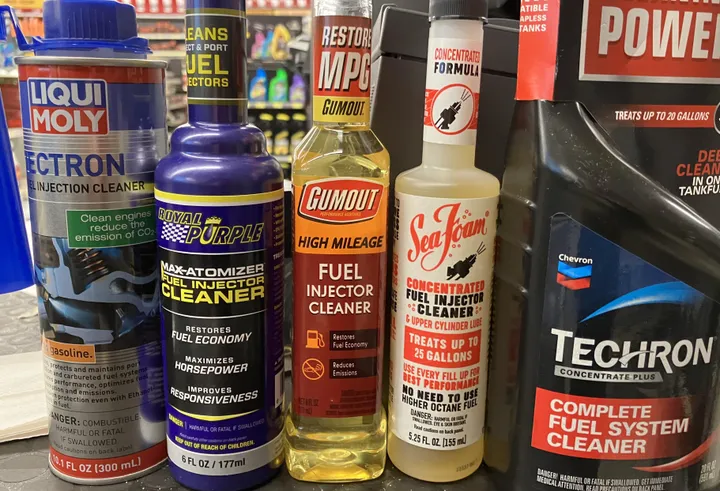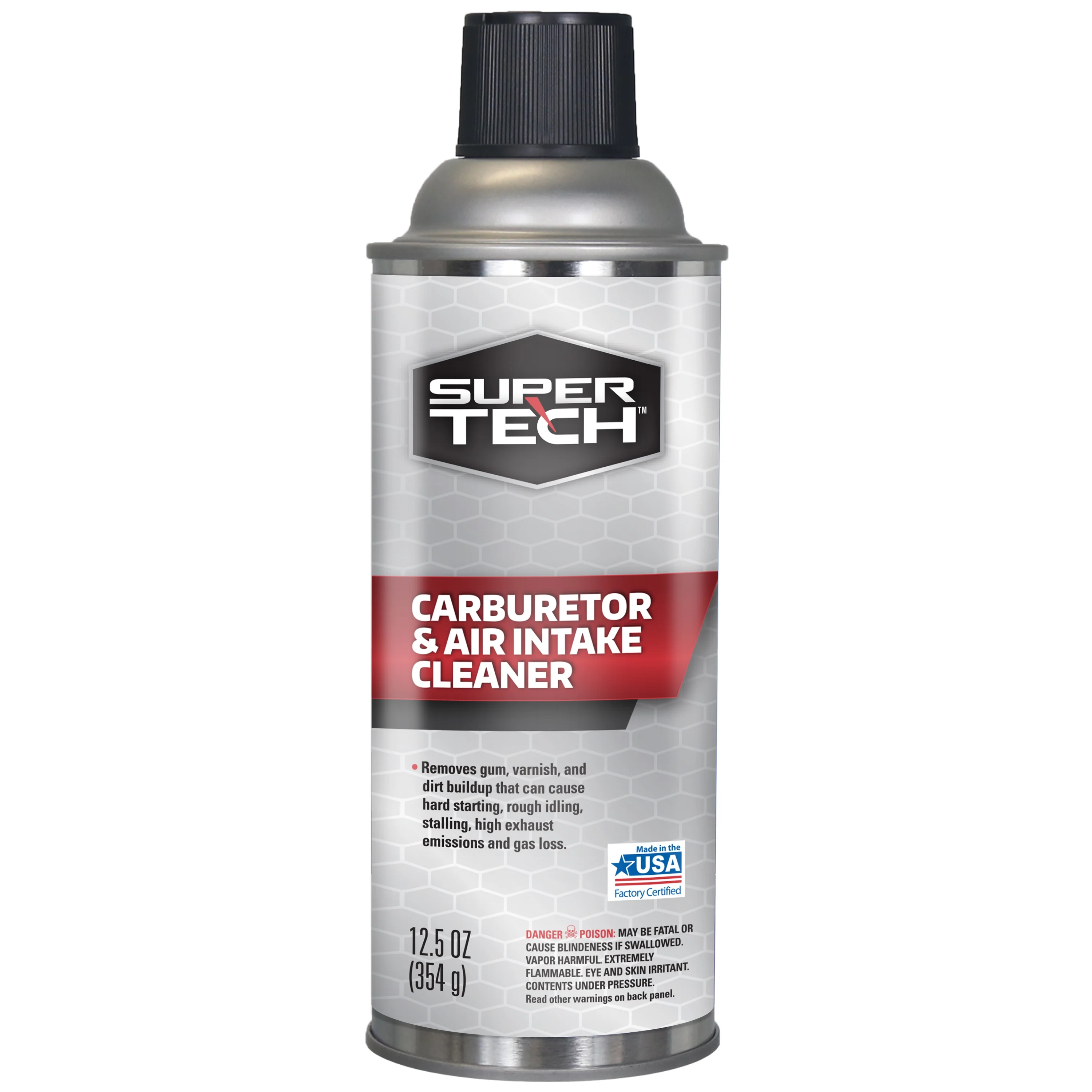


Maintaining a clean carburetor is crucial for ensuring optimal engine performance, fuel efficiency, and longevity in gasoline-powered vehicles. Over time, carburetors can accumulate deposits of gum, varnish, lacquer, and other contaminants, leading to reduced engine power, rough idling, and decreased fuel economy. Carburetor cleaners are specialized solvents designed to dissolve and remove these stubborn deposits, restoring smooth operation and efficient fuel delivery. In this comprehensive guide, we'll delve into the world of carburetor cleaners, exploring their types, factors to consider when choosing the right one, top product recommendations, effective cleaning methods, and maintenance tips.

Carburetor cleaners are specialized solvents formulated to dissolve and remove stubborn deposits from carburetors and related components. These deposits can include:
| Deposit Type | Description |
|---|---|
| Gum | Sticky residue formed from fuel oxidation |
| Varnish | Hardened, lacquer-like coating |
| Lacquer | Resinous substance from fuel breakdown |
| Resin | Solid or semi-solid organic compound |
These contaminants can accumulate over time, clogging fuel and air passages, leading to reduced engine performance and fuel efficiency.
Carburetor cleaners come in various forms, each designed for specific cleaning needs and applications.
Aerosol sprays are the most common and convenient type of carburetor cleaners. These pressurized cans allow for direct application of the cleaning solution onto the carburetor and its components. Aerosol sprays are ideal for quick cleanings and spot treatments, making them a popular choice for DIY enthusiasts and mechanics alike.
Advantages of Aerosol Sprays:
Easy to use
Targeted application
Suitable for quick cleanings
Convenient for spot treatments
Also known as immersion cleaners, dip cleaners are liquid solutions in which the entire carburetor or its components are submerged for a prolonged period. This method is highly effective for removing heavy buildup and stubborn deposits. Dip cleaners are often used in conjunction with ultrasonic cleaners for a thorough deep clean.
Advantages of Dip Cleaners:
Effective for heavy buildup
Thorough cleaning of submerged components
Often used with ultrasonic cleaners for deep cleaning
Ultrasonic cleaners utilize high-frequency sound waves to create cavitation bubbles in the cleaning solution. These bubbles effectively dislodge and remove even the most stubborn deposits from the carburetor components. Ultrasonic cleaners are typically used in combination with dip cleaners for a comprehensive cleaning process.
Advantages of Ultrasonic Cleaners:
Effective for removing stubborn deposits
Utilizes high-frequency sound waves for agitation
Often used in combination with dip cleaners
With a wide range of carburetor cleaners available on the market, it's essential to consider several factors to ensure you choose the right product for your needs.
The cleaning power and effectiveness of a carburetor cleaner are determined by the strength of its solvent formulation. Look for cleaners that can effectively dissolve and remove various types of deposits, including gum, varnish, lacquer, and carbon buildup. Stronger solvents typically offer better cleaning performance but may require additional safety precautions.
Compatibility is a crucial factor when selecting a carburetor cleaner. Different cleaners may interact differently with the materials used in your carburetor, such as metals, plastics, and rubber components. It's essential to choose a cleaner that is compatible with your carburetor's materials to avoid potential damage or deterioration.
| Material | Compatibility Considerations |
|---|---|
| Metals | Avoid corrosive cleaners |
| Plastics | Check for compatibility with specific plastic types |
| Rubber | Ensure cleaner does not degrade or swell rubber components |
Safety should be a top priority when working with carburetor cleaners. Consider the cleaner's flammability, toxicity, and fume levels. Look for products with low VOC (Volatile Organic Compound) content, as they are generally safer for both users and the environment. Additionally, follow proper safety precautions during use, such as working in a well-ventilated area and wearing appropriate protective gear.
| Safety Factor | Description |
|---|---|
| Flammability | Avoid open flames and heat sources |
| Toxicity | Choose low-toxicity formulas |
| Fume Levels | Work in well-ventilated areas |
| VOC Content | Opt for low-VOC products |
The ease of use is another important consideration when choosing a carburetor cleaner. Look for products that are easy to apply and remove, with clear instructions and appropriate applicators or nozzles for targeted application. User-friendly cleaners can save time and reduce the risk of accidental spills or misuse.
Brand reputation and customer reviews can provide valuable insights into the effectiveness and reliability of different carburetor cleaners. Research reputable brands and read customer reviews to gauge the performance and user experiences with various products. Positive reviews from satisfied customers can help you make an informed decision.
Based on extensive research and customer feedback, here are some of the top-rated carburetor cleaners on the market:

The WD-40 Specialist Fast-Acting Carb/Throttle Body & Parts Cleaner is a trusted product from a well-known brand. This fast-acting aerosol cleaner effectively removes deposits and gum buildup, ensuring smooth operation and improved fuel efficiency. Its formula is designed to penetrate deep into the carburetor's components, providing thorough cleaning.
Key Features:
Fast-acting formula
Penetrates deep into components
Removes deposits and gum buildup
Improves fuel efficiency
CRC's Carb & Choke Cleaner is a low-VOC formula designed to quickly dissolve and flush out deposits, gum, and varnish from carburetors and choke valves. This cleaner is easy to use and suitable for various engine types, making it a versatile choice for both professionals and DIY enthusiasts.
Key Features:
Low-VOC formula
Dissolves and flushes out deposits
Suitable for various engine types
Easy to use
The Berryman 0996 Chem-Dip is a heavy-duty dip cleaner ideal for tackling stubborn deposits and buildup. Its long-lasting formula is effective at removing even the most stubborn contaminants, making it a popular choice for heavily contaminated carburetors. This cleaner is suitable for various materials, including plastic and rubber components.
Key Features:
Heavy-duty dip cleaner
Effective for stubborn deposits
Long-lasting formula
Suitable for various materials
While not a dedicated carburetor cleaner, Sea Foam Motor Treatment is a versatile fuel additive and cleaner that can effectively remove deposits and improve overall engine performance. This product can be used as a preventative measure or as a supplementary cleaner in conjunction with other carburetor cleaning methods.
Key Features:
Versatile fuel additive and cleaner
Removes deposits
Improves overall engine performance
Can be used as a preventative measure
Gumout's Jet Spray is an aerosol cleaner designed to penetrate and dissolve tough deposits, restoring proper fuel flow and improving engine responsiveness. Its powerful formula is effective at removing gum, varnish, and other contaminants that can clog fuel and air passages.
Key Features:
Penetrating formula
Dissolves tough deposits
Restores proper fuel flow
Improves engine responsiveness
Proper application and cleaning techniques are essential for achieving optimal results with carburetor cleaners.
When using aerosol sprays, follow these steps:
Remove the air filter and expose the carburetor.
With the engine running at a fast idle, spray the cleaner directly into the carburetor's throat, jets, and passages.
Allow the cleaner to soak for a few minutes to penetrate and dissolve deposits.
Reassemble the air filter.
This method allows the cleaner to penetrate and dissolve deposits effectively, ensuring thorough cleaning.
To use dip cleaners effectively, follow these steps:
Disassemble the carburetor and separate its components.
Submerge the components in the dip cleaner solution, following the manufacturer's instructions for soaking time.
For heavily contaminated parts, use a brush or ultrasonic cleaner for additional agitation and thorough cleaning.
Rinse the components thoroughly after soaking.
Reassemble the carburetor once all components are clean and dry.
Ultrasonic cleaners require a specific setup and operation. Follow these steps:
Place the carburetor components in a mesh basket or container.
Submerge the basket or container in the ultrasonic cleaner filled with the appropriate cleaning solution.
Follow the manufacturer's instructions for optimal cleaning time and temperature.
Remove the components and rinse them thoroughly after cleaning.
Allow the components to dry completely before reassembling the carburetor.
When working with carburetor cleaners, it's essential to follow proper safety precautions to protect yourself and your surroundings.
Work in a well-ventilated area to avoid inhaling fumes.
Wear protective gloves, goggles, and clothing to prevent skin and eye exposure.
Keep the cleaners away from open flames, sparks, and heat sources, as many are flammable.
Dispose of used cleaners and rags properly, following local regulations.
Regular carburetor cleaning and maintenance are crucial to prevent excessive buildup and prolong the life of your engine.
Follow the manufacturer's recommended cleaning schedule, typically every 3,000 miles or as specified. Regular cleaning can help prevent excessive buildup and ensure optimal engine performance.
Using fuel stabilizers and additives can help prevent the formation of gum and varnish in the fuel system. These products can be added to the fuel tank and can help maintain the quality of the fuel, reducing the risk of deposit formation.
| Fuel Additive | Purpose |
|---|---|
| Fuel Stabilizers | Prevent fuel degradation and gum formation |
| Fuel Injector Cleaners | Remove deposits from fuel injectors and intake system |
| Octane Boosters | Improve combustion efficiency and engine performance |
If you plan to store your vehicle or equipment for an extended period, proper storage practices can mitigate fuel degradation and deposit formation. Follow the manufacturer's recommendations for storage procedures, which may include draining the fuel system or adding a fuel stabilizer.
Maintaining a clean carburetor is essential for ensuring optimal engine performance, fuel efficiency, and longevity in gasoline-powered vehicles. By understanding the different types of carburetor cleaners, considering factors like cleaning power, compatibility, safety, and ease of use, and following proper cleaning techniques, you can effectively remove stubborn deposits and restore smooth operation. Regular maintenance and preventative measures, such as using fuel stabilizers and proper storage practices, can further extend the life of your carburetor and engine. With the right carburetor cleaner and proper care, you can enjoy a smooth-running, efficient engine for years to come.
A carburetor mixes air and fuel in the proper ratio for efficient combustion in an engine. It plays a crucial role in ensuring optimal engine performance and fuel efficiency.
Follow the manufacturer's recommended cleaning schedule, typically every 3,000 miles or as specified in the owner's manual.
No, you should only use specialized carburetor cleaners designed for this purpose. Regular household cleaners may damage the carburetor components.
Neglecting regular carburetor cleaning can lead to buildup of deposits, resulting in reduced engine performance, rough idling, decreased fuel efficiency, and potential engine damage.
While it's possible to clean the carburetor without removing it, removing it allows for a more thorough cleaning and access to all components.
Signs of a dirty or faulty carburetor include rough idling, decreased fuel efficiency, difficulty starting the engine, and black exhaust smoke.
Work in a well-ventilated area, wear protective gloves and goggles, and keep the cleaners away from open flames or heat sources.
It's essential to use a carburetor cleaner compatible with the materials used in your specific carburetor to avoid potential damage.
Aerosol sprays are convenient for quick cleanings and spot treatments, while dip cleaners are more effective for heavy buildup and require submerging the carburetor components.
Using fuel stabilizers and additives, following proper storage procedures, and replacing the fuel in your tank regularly can help prevent excessive buildup in the carburetor.

Sarah isn't your average gearhead. With a double major in Mechanical Engineering and Automotive Technology, she dived straight into the world of car repair. After 15 years of turning wrenches at dealerships and independent shops, Sarah joined MICDOT to share her expertise and passion for making cars run like new. Her in-depth knowledge and knack for explaining complex issues in simple terms make her a valuable asset to our team.




